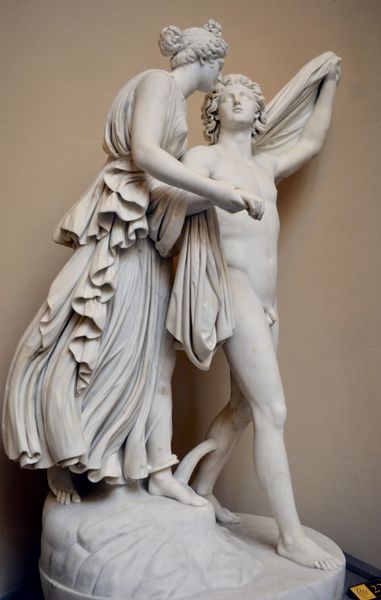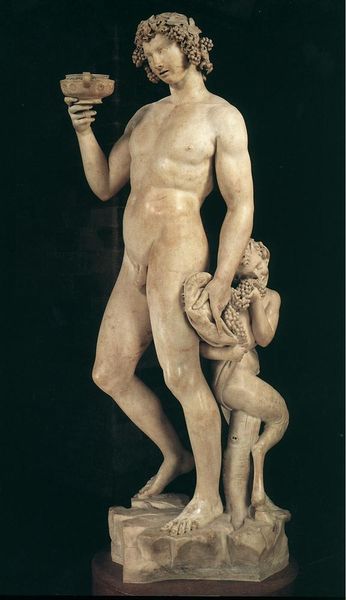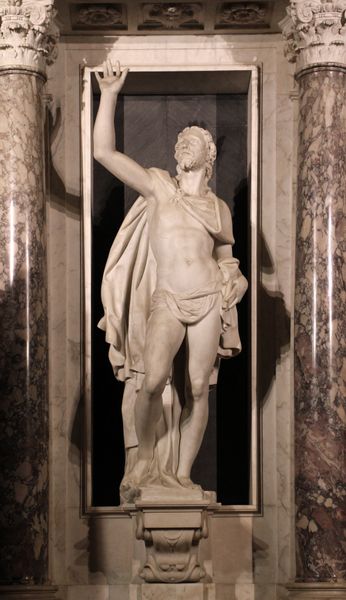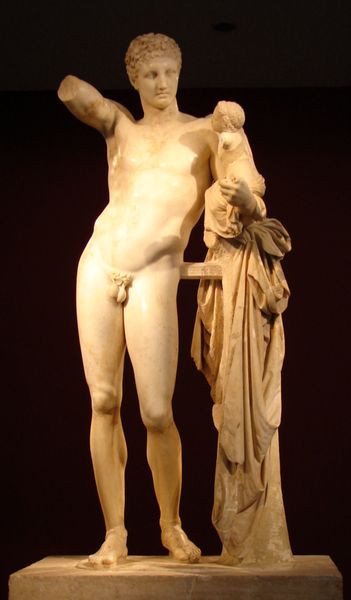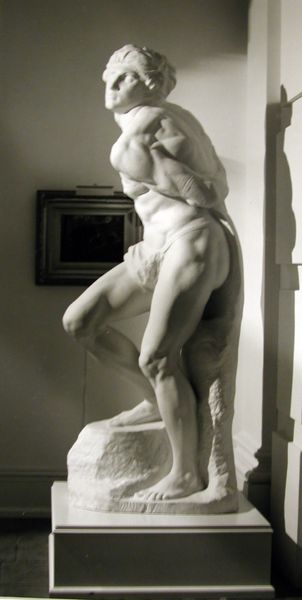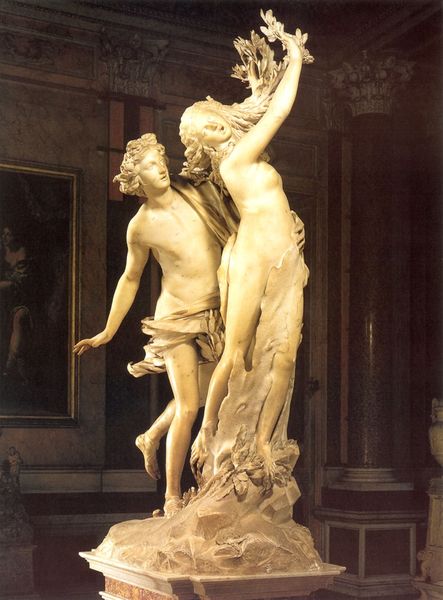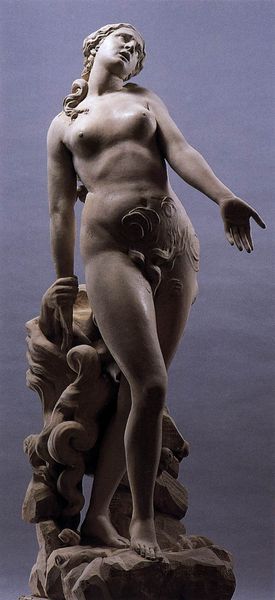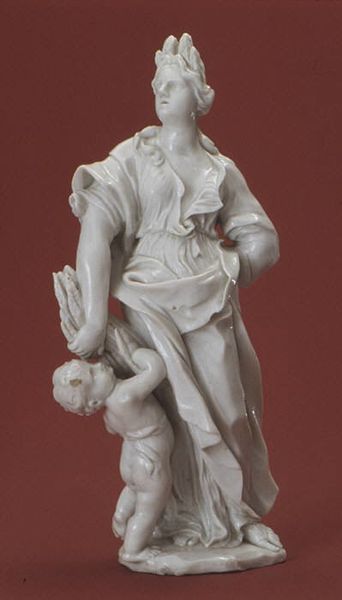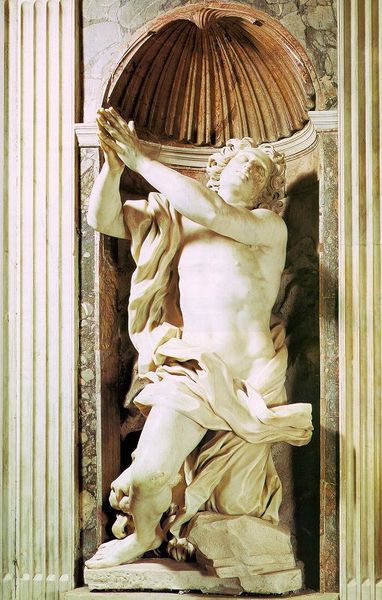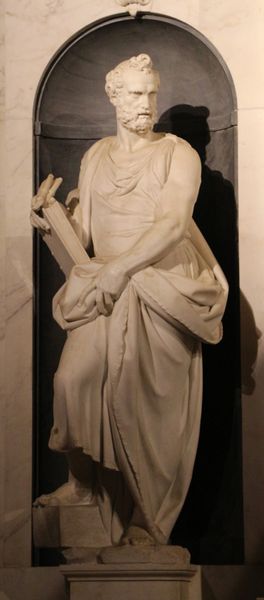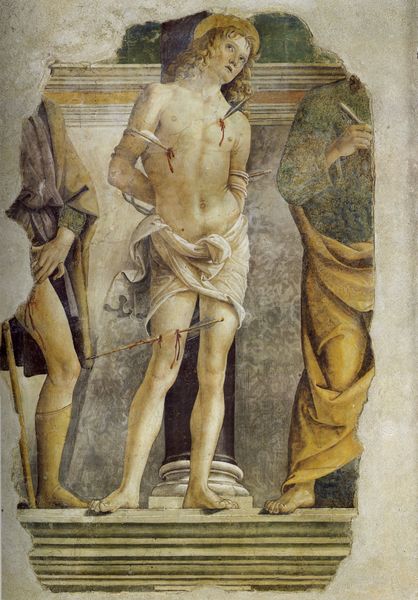
carving, sculpture, marble
#
carving
#
sculpture
#
classical-realism
#
figuration
#
sculpture
#
mythology
#
marble
Copyright: Public domain
Editor: Here we have John Flaxman's "Pastoral Apollo," sculpted in 1824 from marble. It depicts Apollo with a dog, appearing quite serene, almost stoic. I’m curious about its composition. What do you see in this piece from an art historical perspective? Curator: The piece reveals much through its form. Flaxman masterfully employs classical contrapposto, giving Apollo a dynamic, yet stable stance. Note the subtle shift in weight, the gentle curve of the spine – it animates the marble. It speaks to an understanding of ideal form. Consider the relationship between Apollo and the dog. Is the scale and its upward gaze suggestive of loyalty and subordination, or a relationship of equals, each rendered with such detail. Editor: I see the contrapposto, the slight S-curve is definitely there, and I agree about the dog adding an element of vitality. But doesn't the smoothness of the marble and the almost generic facial features somewhat flatten the emotional impact? I mean it does make the image of divinity look like an aesthetic canon. Curator: That “flattening,” as you call it, may indeed be intentional. By reducing intense emotionality, Flaxman elevates Apollo to a realm of detached ideality. What meaning is communicated with Apollo in control of the animal? Perhaps is the sculpture making comment on social order? What sort of dialogue between nature and control, chaos and stability might this arrangement provoke? Editor: I hadn’t thought about it that way before. Focusing on form and composition really opens up new layers of interpretation. Thanks, this has given me a whole new way to view Flaxman's work. Curator: Precisely! Attending to the artist's engagement with these visual elements gives clues into meaning, whether intended or not.
Comments
No comments
Be the first to comment and join the conversation on the ultimate creative platform.
